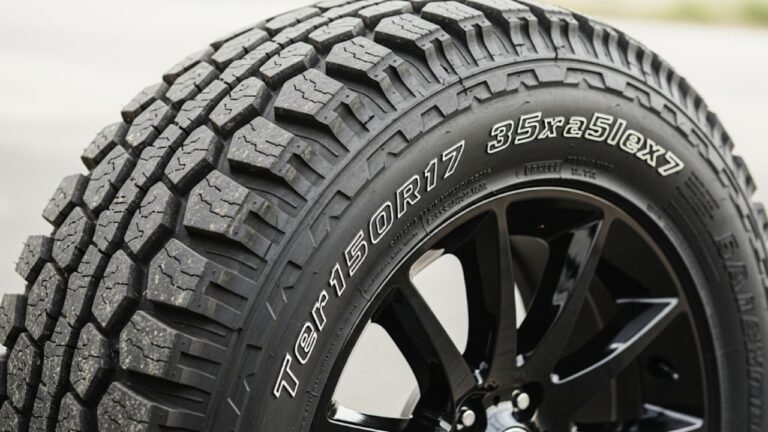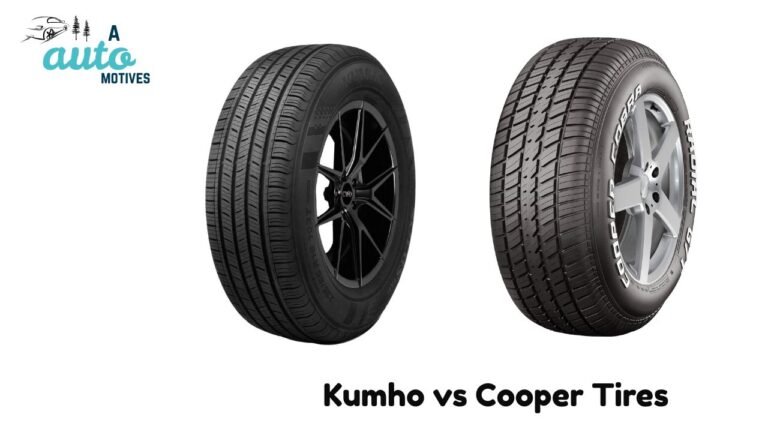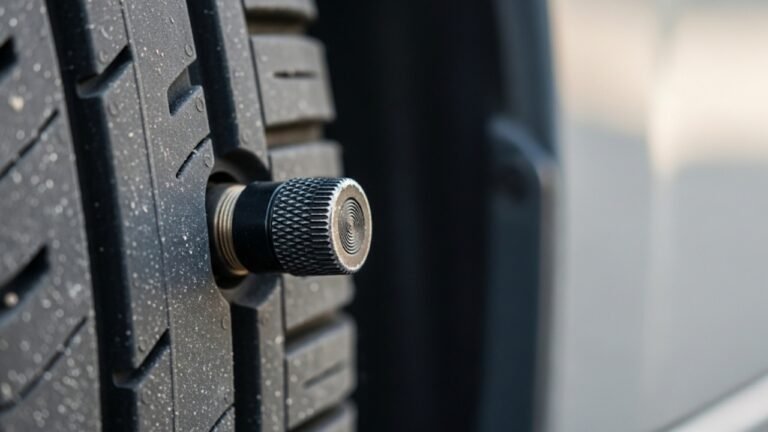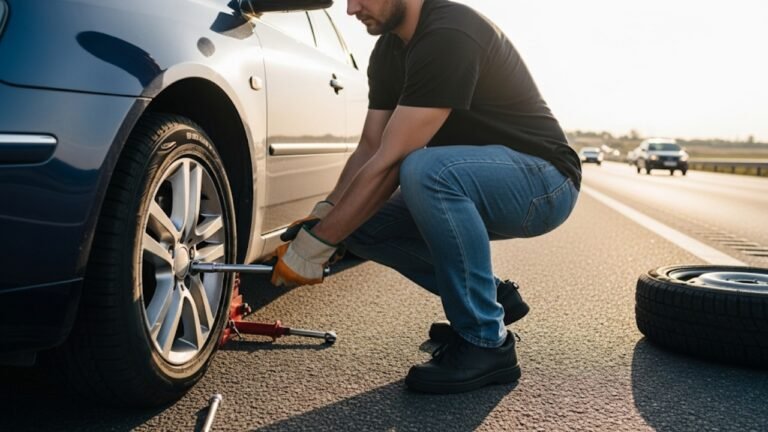How to Inflate a Tire: Step-by-Step Guide
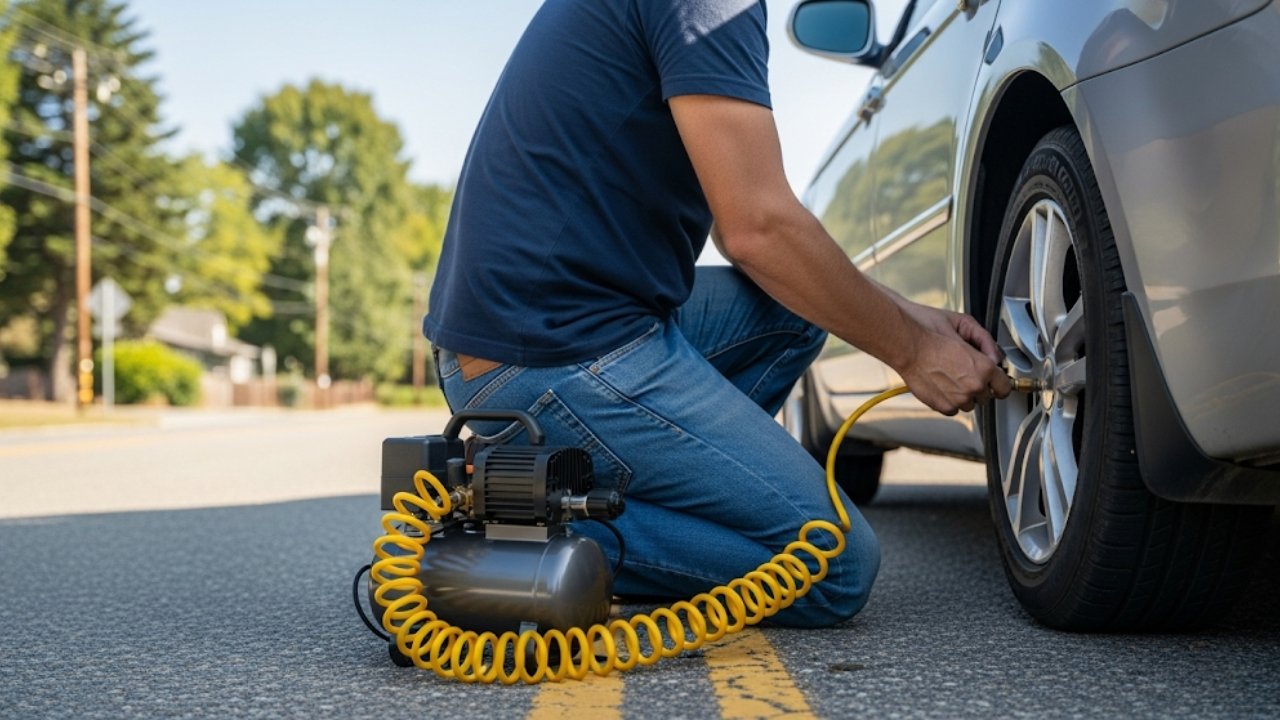
Whether you’re heading to work, planning a road trip, or just running errands, there’s one simple thing that can mess up your entire day—a flat tire. We’ve all been there. You notice the car feels a bit off. You pull over. And sure enough, one tire looks like it’s taken a nap. But here’s the good news: learning how to inflate a tire is easier than you think.
This guide isn’t just another technical manual filled with jargon. It’s like having a trusted friend talk you through the process. We’ll walk you through the steps, share some personal experiences, sprinkle in a bit of humor, and make sure you leave this page confident and capable.
Why Tire Inflation Really Matters
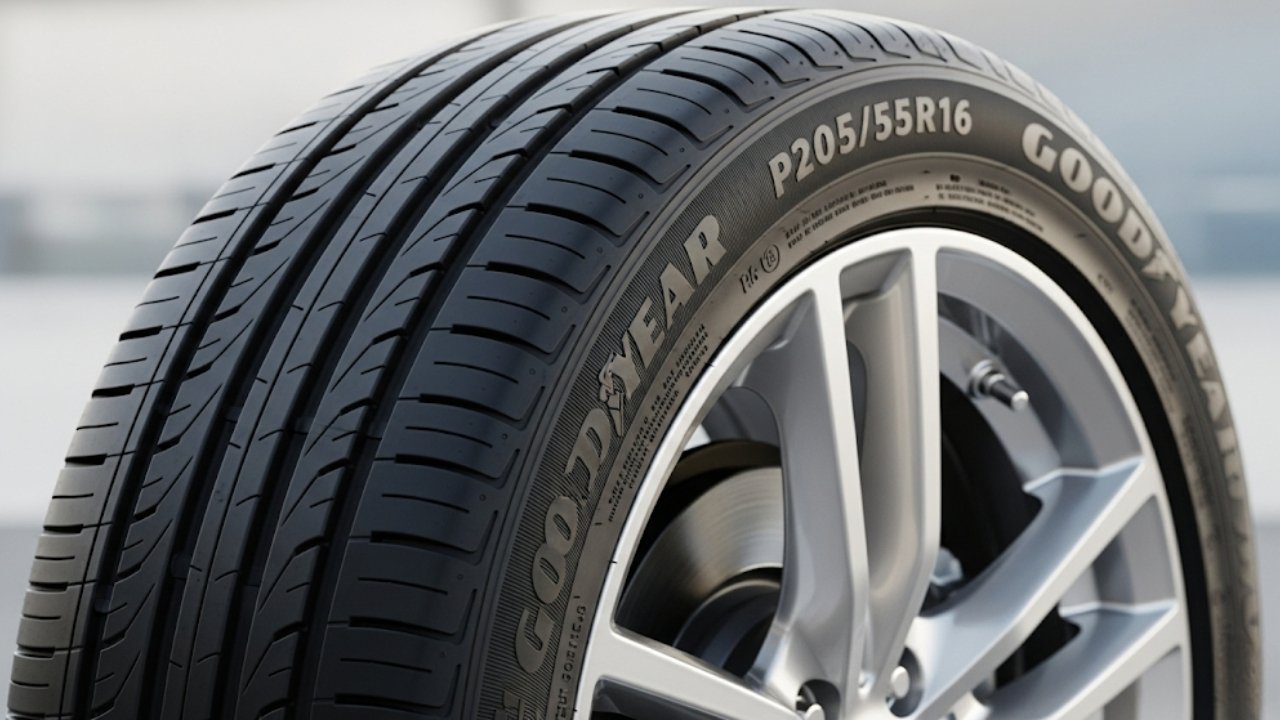
-
Fuel Efficiency: Underinflated tires drag more, using more gas.
-
Tire Life: Right pressure means even wear, which makes your tires last longer.
-
Safety: A properly inflated tire gives you better control and reduces the risk of a blowout.
-
Comfort: Balanced pressure ensures a smoother ride.
A properly inflated tire is like a good cup of tea—just right.
When Should You Check and Inflate Your Tires?
Let’s bust a myth right here: You don’t need to wait for the tire pressure light to flash on your dashboard. That light is useful, but it usually comes on after there’s already been a pressure drop.
Here’s when you should check and possibly inflate:
-
At least once a month
-
Before long trips
-
During sudden temperature changes (cold air lowers pressure)
-
If you notice any pulling, strange vibrations, or thudding sounds
A simple monthly check can save you from roadside surprises.
What You’ll Need to Inflate a Tire
Before diving into action, let’s get your tools ready. Don’t worry, you won’t need a toolbox the size of your trunk.
| Tool | Purpose |
|---|---|
| Tire Pressure Gauge | To check current pressure in PSI |
| Air Compressor | To fill your tire with air (can be at a gas station or portable) |
| Vehicle Manual | To find the correct PSI for your car |
Pro Tip: The correct tire pressure (PSI) isn’t on the tire—it’s usually printed on a sticker inside the driver’s door or in the vehicle’s manual. For most cars, it’s between 30–35 PSI.
Step-by-Step: How to Inflate a Tire
Alright, let’s roll up our sleeves and do this together. Here’s how to inflate a tire like a pro (even if it’s your first time):
1. Park Safely and Let Tires Cool
Always do this on level ground. Make sure the engine is off, and if you’ve been driving for a while, give the tires 10–15 minutes to cool. Why? Because warm tires expand, giving you a false PSI reading.
2. Check the Current Pressure
Remove the valve cap from the tire’s air valve (the little metal or rubber stem sticking out of your tire). Push the pressure gauge onto it and read the PSI.
“The first time I did this, I panicked at the hissing sound—but that’s totally normal!”
If the reading is below the recommended PSI, you need to add air.
3. Attach the Air Hose
Use the air compressor’s hose and push it firmly onto the valve stem. You’ll hear a soft hissing—again, that’s just the air moving in. Make sure it’s snug, or you’ll be losing air instead of gaining it.
If you’re using a gas station air pump, some machines require you to set your desired PSI before starting. Others just pump and you re-check with your gauge.
4. Fill Air in Short Bursts
Add air for 5–10 seconds. Then stop and recheck the pressure. It’s like seasoning food—you can always add more, but it’s tough to take it out. Don’t overinflate!
Target PSI: Use the number on your driver’s door, not what’s printed on the tire wall.
If the pressure is perfect, move on to the next tire.
5. Replace the Valve Cap
Once you’re done, don’t forget to screw the cap back on. It keeps out dirt and protects the valve from wear and tear.
And there you go! You’ve just inflated your tire.
How Long Does It Take to Inflate a Tire?
This is one of the most common questions. The short answer: 2 to 5 minutes per tire.
But it depends on:
-
How low your pressure is
-
Type of compressor (portable ones are slower than gas station units)
-
Your comfort level with checking and rechecking
With practice, it becomes second nature—like brewing your morning coffee.
Signs Your Tire Needs Air Even Before Checking PSI
Your car often talks to you—you just need to know what to listen for. Here are some red flags that your tire needs air:
-
The car feels like it’s dragging or floating
-
Steering feels heavier than usual
-
Uneven tire wear
-
You hear a rhythmic thumping noise
-
The tire looks visibly flatter than the others
A visual check can save you a world of trouble. If it looks low, it probably is.
Portable Air Compressors: Are They Worth It?
Absolutely yes—especially if you hate relying on gas stations. A decent portable air compressor costs between $30–$60 and plugs right into your car’s 12V port. They’re small, light, and come in handy during road trips or emergencies.
Here’s a quick breakdown:
| Feature | Portable Compressor | Gas Station Compressor |
|---|---|---|
| Convenience | ✅ Anytime, anywhere | ❌ Need to find a station |
| Speed | ❌ Slower | ✅ Fast |
| Cost Over Time | ✅ One-time purchase | ❌ Ongoing fees |
| Accuracy | ✅ Some have auto shutoff | ❌ Manual monitoring |
If you’re a frequent driver or love weekend trips, it’s a no-brainer.
Common Mistakes to Avoid When Inflating Tires
Even though the process is simple, a few small mistakes can lead to bigger problems. Here’s what to look out for:
1. Overinflating the Tire
More isn’t better. Too much air makes your tires stiff and reduces the contact area with the road. This causes:
-
Poor grip
-
Faster tread wear in the center
-
A bumpy ride
Check the PSI. Stick to what your vehicle manual or door sticker recommends.
2. Trusting the PSI Printed on the Tire
This is a big one. The number on the tire sidewall is the maximum pressure, not the recommended one. Filling to that level can damage your tires.
Always use the PSI from your car’s specs—usually 30–35 PSI.
3. Ignoring the Weather
Air expands when it’s hot and contracts when it’s cold. That means your tire pressure can change without you noticing.
-
In winter: PSI drops—check more often
-
In summer: PSI rises—don’t overinflate
Just like adjusting your clothing for the season, adjust how you manage tire care.
4. Forgetting the Spare Tire
Ever opened your trunk to change a flat and found out the spare is… flat too? That’s a frustrating experience.
Check your spare’s pressure every few months. It might save you one day.
Nitrogen vs. Regular Air: Should You Care?
You might have seen the green valve caps and wondered, “What’s nitrogen inflation all about?” Let’s break it down.
| Feature | Regular Air | Nitrogen |
|---|---|---|
| Composition | 78% nitrogen, 21% oxygen | 93–95% nitrogen |
| Price | Usually free | Often costs extra |
| Pressure Stability | Slightly fluctuates | More stable |
| Leak Rate | Standard | Slightly slower |
| Real-Life Benefit | Marginal for everyday use | Useful for racing or aviation |
If you drive a regular car for daily errands or work, regular air is just fine. Nitrogen is great—but it’s not a must-have.
What If You Don’t Have a Gauge or Compressor?
Life isn’t always perfect. Sometimes you just realize you’re low on air but have no tools around. Here’s what to do:
-
Head to a gas station with an air pump
-
Ask a nearby auto repair shop—they often check for free
-
Buy a tire inflator kit from a store (many include a gauge and sealer)
-
If it’s an emergency, call roadside assistance
Even a neighbor might have tools. Never be shy to ask. Most drivers know the struggle.
Creating a Tire Maintenance Routine (And Sticking to It)
Caring for your tires doesn’t have to be a chore. Like brushing your teeth, it can become a habit. Here’s a simple monthly checklist:
-
✅ Check tire pressure (including spare)
-
✅ Inspect for nails, cracks, or wear
-
✅ Look at tread depth
-
✅ Rotate tires every 5,000–7,000 miles
-
✅ Align and balance when needed
Set a monthly reminder on your phone. Just like meal prepping or budgeting, tire care is part of adulting smart.
Let’s Talk Real Life: My First Flat Tire Experience
I’ll never forget my first tire scare. It was a humid summer morning. I had a job interview across town. As I reversed my car out of the garage, it felt heavy and lopsided. My rear right tire looked sad—soft and low.
I didn’t know much then. No gauge, no compressor. I panicked.
Thankfully, a kind neighbor lent me a portable inflator. He even helped me read the pressure. That day, I realized how empowering it is to know how to inflate a tire.
Now, I keep my own gauge in the glove box, and my portable compressor in the trunk. Lesson learned.
FAQs on How to Inflate a Tire
1. How often should I inflate my tires?
You should check and inflate your tires once a month or whenever they look low. Also, check before long trips or after extreme weather changes.
2. What is the correct tire pressure for my car?
Check the driver’s side door sticker or your owner’s manual. Most cars recommend between 30–35 PSI. Don’t use the PSI printed on the tire’s sidewall.
3. Can I inflate a tire without a gauge?
Yes, but it’s not ideal. Many gas station pumps have built-in gauges. You can also press down on the tire and look at it, but this method is not accurate. Always use a gauge if possible.
4. What happens if I overinflate my tire?
Overinflated tires become stiff and less flexible. They’re more likely to burst, wear unevenly, and give you a rough ride. Stick to the recommended PSI.
5. Is it safe to drive with slightly underinflated tires?
It’s not recommended. Even slight underinflation affects your fuel economy and tire life. Plus, it increases the risk of blowouts at high speeds.
6. Are portable air compressors reliable?
Yes! They’re handy for emergencies and routine maintenance. Just ensure yours fits your car’s PSI range and power supply.
7. Do I need to inflate tires differently for highway driving?
No. Stick to your manufacturer’s PSI even for long drives. The tires are built for both city and highway speeds.
8. Can I use a bike pump to inflate a car tire?
Technically, yes—but it’s extremely slow and tiring. It might work in an emergency but isn’t practical. Use an air compressor or visit a gas station.
Final Thoughts: Empower Yourself Behind the Wheel
Inflating a tire is a small skill, but it carries big power. It saves money, keeps you safe, and gives you confidence. Whether you’re a new driver, a college student, a busy parent, or just someone who wants to feel in control—learning how to inflate a tire is something you’ll never regret.
Make it part of your monthly routine. Invest in a tire pressure gauge and a portable compressor. And if you ever see someone stranded with a flat, lend a hand. Because that’s how road stories and human kindness come full circle.

